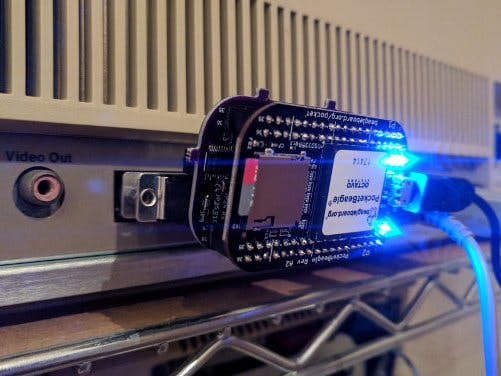I'm pretty excited about using tiny single-board computers like Raspberry Pi to interface with retro systems and "fill in" for peripherals and missing hardware. The BeagleBone Black and PocketBeagle are especially exciting little boards, since their integrated SOCs have co-processors called PRUs that can do very precise digital I/O in software. Earlier this year, someone used this capability to make an Ethernet gateway for talking to a Xerox Alto!
The problem is that most of these boards use 3.3V logic, while most old systems deal in 5V. So, you need an extra bit of hardware that does the voltage translation. There are a few classic ways to do this, but lately I've been intrigued by the TXS0108E and TXB0108 series of chips, which do bidirectional voltage translation without needing to be told which direction the signal at each pin is going! I was curious to know if you could design a voltage translation board around these chips that would be general---you could use the same board for all kinds of projects with fairly minimal changes.So, that's what I've tried to do, and my proof of concept is an Apple ProFile hard drive emulator. The ProFile was a 5MB hard drive that Apple used for the Apple III and Lisa computers (both flops!) and they're not so easy to find anymore. Emulating one requires bidirectional I/O and a parallel port that can send data at 1MB/s, a pretty quick rate for a bit of bitbanging.
This project was a lot of fun to do, and it gives me a lot of hope for making these sorts of hardware substitutes easier for hobbyists to build. I hope there are lots of applications where one quick solution is to get a PocketBeagle and a board like mine and whip up a replacement for a missing piece.
See the GitHub repo for full instructions.







Comments
Please log in or sign up to comment.